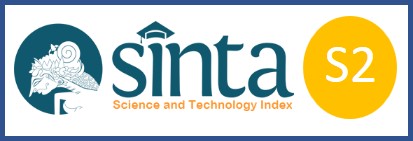Map of Export Product Competition of Indonesia, Malaysia, Singapore, and Thailand
Downloads
This research attempts to investigate the export product competitiveness of Indonesia, Malaysia, Singapore, and Thailand which are classified into five major groups: primer product, natural research-intensive product, unskilled labor-intensive product, technology-intensive product, and human capital-intensive product. The method used in this research is product mapping, which is the combination between Revealed Symmetric Comparative Advantage (RSCA) and Trade Balance Index (TBI). The result shows that Indonesia has a comparative advantage in the export specialization of primary products, natural research-intensive products, and unskilled labor-intensive products. Singapore and Malaysia have a comparative advantage in technology-intensive products, while Thailand has a human capital-intensive product. This research proves the flying geese pattern of the five groups of products, that if a country becomes a leader of one product, it will become a follower in another product.
Balassa, B. (1965). Trade liberalisation and "revealed” comparative advantage 1. The manchester school, 33(2), 99-123.
Chowdhury, A., & Kirkpatrick, C. H. (1990). Human resources, factor intensity and comparative advantage of ASEAN. Journal of Economic studies. 17(5), 14-26.
Dalum, B., Laursen, K., & Villumsen, G. (1998). Structural change in OECD export specialisation patterns: de-specialisation and ‘stickiness'. International Review of Applied Economics, 12(3), 423-443.
Holst, D. R., & Weiss, J. (2004). ASEAN and China: export rivals or partners in regional growth?. World Economy, 27(8), 1255-1274.
Kojima, K. (2000). The "flying geese” model of Asian economic development: origin, theoretical extensions, and regional policy implications. Journal of Asian Economics, 11(4), 375-401.
Kueh, Y. Y., & Piaw, J. (1997). The role of Hong Kong in Sino-American economic relations. dalam The Political economy of Sino-American relations: a greater China perspective (pp. 61-92). Hong Kong University Press.
Kumar, S. (1994). Joho-Singapore-Riau Grwoth Triangle: A Model of Subregional Co-operation', dalam Growth Triangles in Asia: A New Approach to Regional Economic Co-operation (pp. 175-242). ADB and Oxford University Press.
Kwan, C. H. (2002). The rise of China and Asia's flying-geese pattern of economic development: an empirical analysis based on US import statistics. NRI papers, 52(1), 1-11.
Maule, A. (1996). Some implications of AFTA for Thailand: a revealed comparative advantage approach. ASEAN Economic Bulletin, 14-38.
Mayer, J., Butkevicius, A., Kadri, A., & Pizarro, J. (2003). Dynamic products in world exports. Review of World Economics, 139(4), 762-795.
Thant, M., Tang, M., & Kakazu, H. (1995). Growth triangles in Asia: a new approach to regional economic cooperation. Oxford University Press.
Redding, S. (2002). Specialization dynamics. Journal of International Economics, 58(2), 299-334.
Widodo, T. (2008a). Dynamic changes in comparative advantage: Japan "flying geese” model and its implications for China. Journal of Chinese Economic and Foreign Trade Studies.
Widodo, T. (2008b). The structure of protection in Indonesian manufacturing sector. ASEAN Economic Bulletin, 161-178.
Widodo, T. (2009a). Comparative advantage: theory, empirical measures and case studies. Review of Economic and Business Studies (REBS), (4), 57-82.
Widodo, T. (2009b). Dynamics and convergence of trade specialization in East Asia. The Asia Pacific Journal of Economics & Business, 13(1), 31.
Wong, J., & Chan, S. (2003). China-ASEAN free trade agreement: shaping future economic relations. Asian Survey, 43(3), 507-526.
World Bank. (2016). World Integrated Trade Solution. (online) (http://wits.worldbank.org/wits/default.aspx, diakses pada 20 November 2016).
Yussof, I., & Ismail, R. (2002). Human resource competitiveness and inflow of foreign direct investment to the ASEAN region. Asia-Pacific Development Journal, 9(1), 89-107.
Voon, J., & Yue, R. (2003). China-ASEAN export rivalry in the US market. Journal of the Asia Pacific Economy, 8(2), 157-179.
Copyright (c) 2016 Akhmad Jayadi, Harry Azhar Aziz

This work is licensed under a Creative Commons Attribution-ShareAlike 4.0 International License.
JIET (Jurnal Ilmu Ekonomi Terapan) (p-ISSN: 2541-1470; e-ISSN: 2528-1879) is licensed under a Creative Commons Attribution-ShareAlike 4.0 International License
Authors who publish with JIET (Jurnal Ilmu Ekonomi Terapan) agree to the following terms:
- The journal allows the author to hold the copyright of the article without restrictions.
- The journal allows the author(s) to retain publishing rights without restrictions
- The legal formal aspect of journal publication accessibility refers to Creative Commons Attribution ShareAlike 4.0 International License (CC BY-SA).












